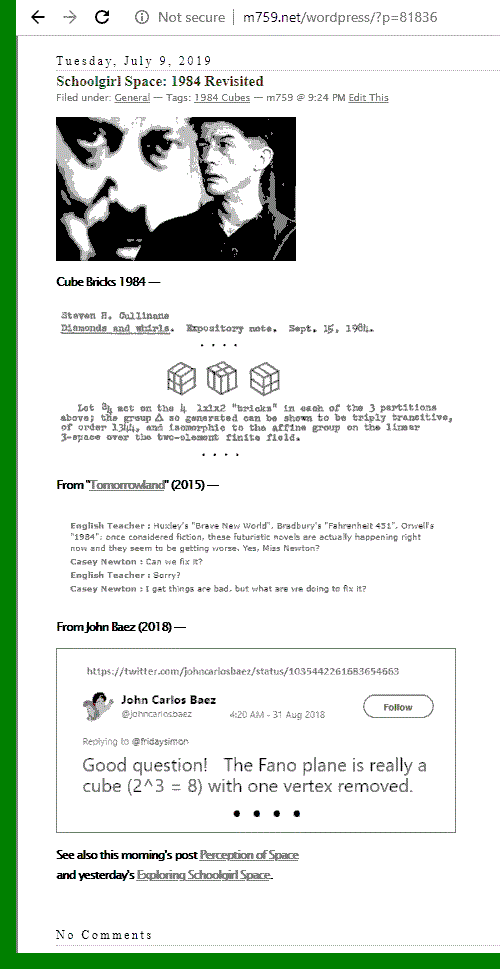From posts tagged Schoolgirl Space —
Thursday, May 16, 2024
Para Los Muertos: Thoroughly Modern Schoolgirl Space
Friday, November 17, 2023
Schoolgirl Problem: Not Queen of the Desert
Thursday, May 19, 2022
Friday, April 16, 2021
Schoolgirl Problem (Kirkman’s, not Epstein’s)
Thursday, November 19, 2020
Set Design and the Schoolgirl Problem
Thursday, January 23, 2020
Exploring Schoolgirl Space…
"Old men ought to be explorers." — T. S. Eliot.
Rose the Hat in her younger days.
See as well Barsotti in this journal.
Friday, September 27, 2019
Algebra for Schoolgirls
The 15 points of the finite projective 3-space PG(3,2)
arranged in tetrahedral form:
The letter labels, but not the tetrahedral form,
are from The Axioms of Projective Geometry , by
Alfred North Whitehead (Cambridge U. Press, 1906).
The above space PG(3,2), because of its close association with
Kirkman's schoolgirl problem, might be called "schoolgirl space."
Screen Rant on July 31, 2019:
A Google Search sidebar this morning:
Apocalypse Soon! —
Saturday, September 21, 2019
Exploring Egypt: The Sequel to Exploring Schoolgirl Space*
Friday, September 13, 2019
Schoolgirl Space…
Thursday, August 15, 2019
Schoolgirl Space — Tetrahedron or Square?
The exercise in the previous post was suggested by a passage
purporting to "use standard block design theory" that was written
by some anonymous author at Wikipedia on March 1, 2019:

Here "rm OR" apparently means "remove original research."
Before the March 1 revision . . .

The "original research" objected to and removed was the paragraph
beginning "To explain this further." That paragraph was put into the
article earlier on Feb. 28 by yet another anonymous author (not by me).
An account of my own (1976 and later) original research on this subject
is pictured below, in a note from Feb. 20, 1986 —
Saturday, August 10, 2019
Schoolgirl Space* Revisited:
The Square "Inscape" Model of
the Generalized Quadrangle W(2)
Click image to enlarge.
* The title refers to the role of PG (3,2) in Kirkman's schoolgirl problem.
For some backstory, see my post Anticommuting Dirac Matrices as Skew Lines
and, more generally, posts tagged Dirac and Geometry.
Tuesday, July 16, 2019
Schoolgirl Space for Quantum Mystics
Monday, July 15, 2019
Arche’s Schoolgirl Space
Tuesday, July 9, 2019
Schoolgirl Space: 1984 Revisited
Cube Bricks 1984 —
From "Tomorrowland" (2015) —

From John Baez (2018) —
See also this morning's post Perception of Space
and yesterday's Exploring Schoolgirl Space.
Monday, July 8, 2019
Exploring Schoolgirl Space

See also "Quantum Tesseract Theorem" and "The Crosswicks Curse."
Sunday, July 7, 2019
Schoolgirl Problem
Anonymous remarks on the schoolgirl problem at Wikipedia —
"This solution has a geometric interpretation in connection with
Galois geometry and PG(3,2). Take a tetrahedron and label its
vertices as 0001, 0010, 0100 and 1000. Label its six edge centers
as the XOR of the vertices of that edge. Label the four face centers
as the XOR of the three vertices of that face, and the body center
gets the label 1111. Then the 35 triads of the XOR solution correspond
exactly to the 35 lines of PG(3,2). Each day corresponds to a spread
and each week to a packing."
See also Polster + Tetrahedron in this journal.
There is a different "geometric interpretation in connection with
Galois geometry and PG(3,2)" that uses a square model rather
than a tetrahedral model. The square model of PG(3,2) last
appeared in the schoolgirl-problem article on Feb. 11, 2017, just
before a revision that removed it.
Saturday, March 2, 2019
Sunday, February 17, 2019
For the Schoolgirls of 1959
The dies natalis of St. Buddy Holly was Feb. 3, 1959.
This year on Feb. 3, a geometric illustration of the well-known
schoolgirl problem was added to a brand-new Wikipedia article
on the finite geometry PG(3,2).
Saturday, August 25, 2018
Schoolgirl Problem
Sunday, July 15, 2018
Schoolgirl Problems
A Warren, Pennsylvania, newspaper article from May 12, 2018,
“A terrorist among them,” quotes Ann Creal of Warren on
schooldays of the late 1950’s and on a German exchange student,
Gudrun Ensslin, who later became famous for her violent political
activities:
“She said Ensslin dated while here (the man
she identified as Ensslin’s date told the Times Observer
he had no recollection of her).”
I am the man that was identified as Ensslin’s date, and I still
have no recollection of her.
Ann Creal is the former Ann Fuellhart, who was a college freshman
in the fall of 1959, when I was a high school senior —
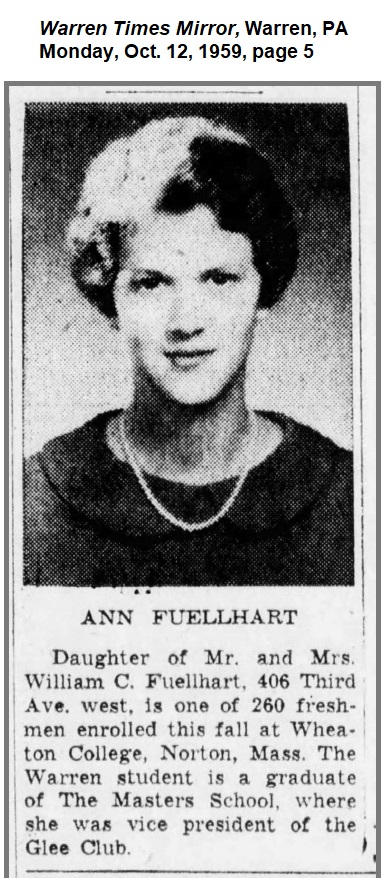
Ann Creal apparently confused me with Scott Mohr, who
graduated from Warren High School in 1958. See the Log24
posts Crux and Doppelgänger.
Thursday, February 16, 2017
Schoolgirls and Heptads
A Feb. 12 note in the "talk" section of the Wikipedia article
"Kirkman's schoolgirl problem" —

The illustration above was replaced by a new section in the article,
titled "Galois geometry."
The new section improves the article by giving it greater depth.
For related material, see Conwell Heptads in this journal
(or, more generally, Conwell) and a 1985 note citing Conwell's work.
Tuesday, November 29, 2016
Thursday, August 4, 2016
Schoolgirl Problems
Compare and contrast the recent films
"The Diary of a Teenage Girl" and "Strangerland."
(This post was suggested by yesterday's
"How Deep the Rabbit Hole Goes.")
Monday, February 22, 2016
Schoolgirl Problems…
and versions of "Both Sides Now"



See a New York Times version of "Both Sides Now."
I prefer a version by Umberto Eco.
Related material for storytellers and the Church of Synchronology —
This journal on the date of the above shooting script, 03/19/15.
Tuesday, September 15, 2015
Schoolgirl Problem
Or: Ten Years and a Day
In memory of film director Robert Wise,
who died ten years ago yesterday.

A search in this journal for "Schoolgirl" ends with a post
from Sept. 10, 2002, The Sound of Hanging Rock.
See as well a Log24 search for "Strangerland"
(a 2015 film about a search for a schoolgirl) and
a Log24 search for "Weaving."
Related mathematics: Symplectic.
Some related images (click to enlarge) —
Friday, August 14, 2015
Schoolgirl Problem
But first, a word from our sponsa* …
Sir Laurence Olivier in "Term of Trial" (1962),
a film starring Sarah Miles as a schoolgirl —

* Bride in Latin. See also "bride's chair,"
a phrase from mathematical pedagogy.
Friday, June 19, 2015
Schoolgirl Problem
Sunday, April 20, 2025
Merton College Barometer . . . Continues.
For fans of "Meet Joe Black" …
Friday, April 11, 2025
|
That April 11, 2025, post suggests . . .
An image reproduced here on December 11, 2018
("Carried Away") —
|
The new American Mathematical Society logo suggests |
Sunday, April 13, 2025
What’s in a Name? . . . Falcone vs. Gigante
The Falcone Schoolgirl Problem . . .
|
"Searching for a definitive indication that The Penguin is charting its own course in the long history of Batman stories? Well, look no further than episode 5, when Sofia Falcone (Cristin Milioti) takes over her crime family under a new name: Sofia Gigante. Spurned by her father’s betrayal, she assumes her late mother’s name and plans to create a new legacy." |
Wednesday, February 26, 2025
Red Dot Award
"Cristin Milioti, dressed in custom Dior, chatted with 'Extra’s'
Mona Kosar Abdi on the 2025 SAG Awards red carpet."

From this journal earlier . . .
The Falcone Schoolgirl Problem . . .
"You're very beautiful, dear, but you're no Milioti."
Monday, November 18, 2024
Tuesday, March 26, 2024
Pour les petites
"This is by way of a pep talk, mes petites . . ."
Musical and theatrical accompaniment . . .
Musical: Valse pour les petites , reportedly recorded on March 2, 2019;
Theatrical: A Log24 post from that same date, Schoolgirls for Galois.
Sunday, February 18, 2024
A Scene from “Terminator Zero: Rise of the Chatbots” —
Deepfake Tango in Paris
Deepfake Image from the Internet:

Not Emily in Paris.
Related Deep Learning and Deepfake Learning:
The study of finite topological spaces may be regarded as a
deepfake approach to finite geometry. See the previous post.
Deepfake Tango in Paris
Saturday, February 17, 2024
Sixteen Finite-Space Topologies
From Wikipedia, sixteen T0 topologies on a four-set —
{∅, {a}, {a, b}, {a, b, c}, {a, b, d}, {a, b, c, d}} (T0)
{∅, {a}, {a, b}, {a, c}, {a, b, c}, {a, b, c, d}} (T0)
{∅, {a}, {b}, {a, b}, {a, c}, {a, b, c}, {a, b, c, d}} (T0)
{∅, {a}, {a, b}, {a, b, c}, {a, b, c, d}} (T0)
{∅, {a}, {b}, {a, b}, {a, b, c}, {a, b, c, d}} (T0)
{∅, {a}, {a, b}, {c}, {a, c}, {a, b, c}, {a, b, d}, {a, b, c, d}} (T0)
{∅, {a}, {a, b}, {a, c}, {a, b, c}, {a, b, d}, {a, b, c, d}} (T0)
{∅, {a}, {b}, {a, b}, {a, b, c}, {a, b, d}, {a, b, c, d}} (T0)
{∅, {a}, {b}, {a, b}, {a, c}, {a, b, c}, {a, b, d}, {a, b, c, d}} (T0)
{∅, {a}, {b}, {a, b}, {b, c}, {a, b, c}, {a, d}, {a, b, d}, {a, b, c, d}} (T0)
{∅, {a}, {a, b}, {a, c}, {a, b, c}, {a, d}, {a, b, d}, {a, c, d}, {a, b, c, d}} (T0)
{∅, {a}, {b}, {a, b}, {a, c}, {a, b, c}, {a, d}, {a, b, d}, {a, c, d}, {a, b, c, d}} (T0)
{∅, {a}, {b}, {a, b}, {c}, {a, c}, {b, c}, {a, b, c}, {a, b, d}, {a, b, c, d}} (T0)
{∅, {a}, {b}, {a, b}, {c}, {a, c}, {b, c}, {a, b, c}, {a, d}, {a, b, d}, {a, c, d}, {a, b, c, d}} (T0)
{∅, {a}, {b}, {a, b}, {c}, {a, c}, {b, c}, {a, b, c}, {a, b, c, d}} (T0)
{∅, {a}, {b}, {a, b}, {c}, {a, c}, {b, c}, {a, b, c}, {d}, {a, d}, {b, d}, {a, b, d}, {c, d}, {a, c, d}, {b, c, d}, {a, b, c, d}} (T0)
Compare and contrast with the finite geometry of the power set of a four-set.
Monday, July 4, 2022
♫ I’ll be seeing you . . . ♫
Wednesday, June 29, 2022
Mathematical Plays*
A song whose melody was used in
Westworld, Season 4, Episode 1 —
"Singin' in the old bars
Swingin' with the old stars
Livin' for the fame
Kissin' in the blue dark
Playin' pool and wild darts
Video games"
In memory of a video game executive
who reportedly died on June 22, 2022 —
* Adapted from a book title.
Friday, May 27, 2022
Friday, February 11, 2022
For Space Groupies
A followup to Wednesday's post Deep Space —

Related material from this journal on July 9, 2019 —
Cube Bricks 1984 —
From "Tomorrowland" (2015) —

From other posts tagged 1984 Cubes —
Monday, November 23, 2020
In the Garden of Adding
“In the garden of Adding,
Live Even and Odd….”
— The Midrash Jazz Quartet in
City of God , by E. L. Doctorow

Related material — Schoolgirls and Six-Set Geometry.
Tuesday, November 17, 2020
“To Illustrate My Last Remark . . .”
The previous post contrasted recent bullshit of Louis Menand
with some non-bullshit at Wikipedia.
But Wikipedia is hardly blameless —

The text on the left is bullshit. The illustration on the right is not.
Wednesday, October 7, 2020
Between Pyramid and Pentagon

The 35 small squares between the pyramid and the pentagon
in the above search result illustrate the role of finite geometry
in the Miracle Octad Generator of R. T. Curtis.

Wednesday, August 26, 2020
Thursday, July 2, 2020
The Maxwell* Enticement
[Update of Sunday morning, July 12, 2020 —
This July 2 post was suggested in part by the July 1 post Magic Child
and in part by the Sept. 15, 1984, date in the image below. For more
details about that date, possibly the death date of author Richard
Brautigan, see "The Life and Death of Richard Brautigan," by
Lawrence Wright, in Rolling Stone on April 11, 1985.
From that article:
Marcia called him the next night [Sept. 15, 1984]
in Bolinas. He asked if she liked his mind. "I said,
‘Yes, Richard, I like your mind. You have the ability
to jump in and out of spaces. It’s not linear thinking;
it’s exciting, catalytic, random thinking.’ "
Such thinking, though interesting, is not recommended for the
general public. Sept. 15, 1984, was perhaps Brautigan's last day alive.]
* See Maxwell in posts tagged Gods and Giants.
Tuesday, May 5, 2020
Thursday, April 23, 2020
Octads and Geometry
See the web pages octad.group and octad.us.
Related geometry (not the 759 octads, but closely related to them) —
The 4×6 rectangle of R. T. Curtis
illustrates the geometry of octads —
Curtis splits the 4×6 rectangle into three 4×2 "bricks" —
 .
.
"In fact the construction enables us to describe the octads
in a very revealing manner. It shows that each octad,
other than Λ1, Λ2, Λ3, intersects at least one of these ' bricks' —
the 'heavy brick' – in just four points." . . . .
— R. T. Curtis (1976). "A new combinatorial approach to M24,"
Mathematical Proceedings of the Cambridge Philosophical Society ,
79, pp 25-42.
Monday, March 16, 2020
Mathematics and Narrative* Continues:
Mathematics: See Tetrahedron vs. Square in this journal
(Notes on two different models of schoolgirl space ).
Narrative: Replacing the square from the above posts by
a related cube …
… yields a merchandising inspiration —
Dueling Holocrons:
Jedi Cube vs. Sith Tetrahedron —
* See also earlier posts on Mathematics and Narrative.
Sunday, March 1, 2020
Wednesday, February 26, 2020
“Perfect”
Usage example —
(Click to enlarge.)
See also the previous post as well as PG(3,2),
Schoolgirl Space, and Tetrahedron vs. Square.
Saturday, December 7, 2019
Canonicity* Illustrated: The Offensive Tet
* “Canonicity” is a reference to the previous post.
See as well Tetrahedron vs. Square and Algebra for Schoolgirls.
Friday, November 22, 2019
The Virgin Field:
Representing Schoolgirl Space
From a book reviewed in the April 1923
Bulletin of the American Mathematical Society —

From a later book —
"Her wall is filled with pictures" — Chuck Berry
Sunday, September 29, 2019
Spiritual Kin
"The 15 Puzzle and the Magic Cube
are spiritual kin …."
— "Metamagical Themas" column,
Douglas R. Hofstadter, Scientific American ,
Vol. 244, No. 3 (March 1981), pp. 20-39
As are the 15 Schoolgirls and the Eightfold Cube.
Wednesday, September 18, 2019
Powers of X
Screen Rant on July 31, 2019 —
The above space PG(3,2), because of its close association with
Kirkman's schoolgirl problem, might be called "schoolgirl space."
See as well a Log24 post from the above Screen Rant date —
Tuesday, August 20, 2019
Inception
"The inception of critical thought, of a philosophic
anthropology, is contained in the archaic Greek definition
of man as a 'language-animal'…."
— George Steiner, Real Presences
A schoolgirl in 1961 —

"Non, rien de rien…"
— Edith Piaf
"I get a kick though it's clear to see,
You obviously don't adore me."
— Cole Porter
Monday, August 19, 2019
A Couple of Tots
The title is from the post "Child's Play" of May 21, 2012 . . .
"It seems that only one course is open to the philosopher
who values knowledge and truth above all else. He must
refuse to accept from the champions of the forms the
doctrine that all reality is changeless [and exclusively
immaterial], and he must turn a deaf ear to the other party
who represent reality as everywhere changing [and as only
material]. Like a child begging for 'both', he must declare
that reality or the sum of things is both at once [το όν τε και
το παν συναμφότερα] (Sophist 246a-249d)."
Related material —
"Schoolgirl Space: 1984 Revisited" (July 9, 2019) and
posts tagged Tetrahedron vs. Square.
Friday, August 16, 2019
Nocciolo
A revision of the above diagram showing
the Galois-addition-table structure —

Related tables from August 10 —

See "Schoolgirl Space Revisited."
Sunday, August 11, 2019
The Culture Desk
American Songwriters (the Petrusich versions)
The New Yorker Culture Desk online yesterday —
The New Yorker Culture Desk onine July 16 —
Related aesthetic meditation from this journal on July 16 —

(From the post "Schoolgirl Space for Quantum Mystics")
Saturday, August 10, 2019
Wednesday, August 7, 2019
Arts: Boom-Booms Meet Pom-Poms —
Exploring Schoolgirl Space (July 8) continues.
"Eh Fatty Boom-Boom
Hit me with the Ching-Ching"
— Song lyric
Wednesday, July 31, 2019
The Epstein Chronicles, or: Z is for Zorro
The geometry of the 15 point-pairs in the previous post suggests a review:
From "Exploring Schoolgirl Space," July 8 —

The date in the previous post — Oct. 9, 2018 — also suggests a review
of posts from that date now tagged Gen-Z:

Thursday, July 18, 2019
Avatar for Inspector Tennison
Image from a post of November 13, 2006.
See as well Schoolgirl Tetrahedron.
Related lyrics from Bruce Springsteen and
the Pointer Sisters —
Well, Romeo and Juliet, Samson and Delilah
Baby you can bet a love they couldn't deny
My words say split, but my words they lie
Cause when we kiss, ooh, fire
{Bridge}
Oh fire
Kisses like fire…
Burn me up with fire
I like what you're doin now, fire
Touchin' me, fire
Touchin' me, burnin me, fire
Take me home

Wednesday, July 17, 2019
The Artsy Quantum Realm
|
arXiv.org > quant-ph > arXiv:1905.06914 Quantum Physics Placing Kirkman's Schoolgirls and Quantum Spin Pairs on the Fano Plane: A Rainbow of Four Primary Colors, A Harmony of Fifteen Tones J. P. Marceaux, A. R. P. Rau (Submitted on 14 May 2019) A recreational problem from nearly two centuries ago has featured prominently in recent times in the mathematics of designs, codes, and signal processing. The number 15 that is central to the problem coincidentally features in areas of physics, especially in today's field of quantum information, as the number of basic operators of two quantum spins ("qubits"). This affords a 1:1 correspondence that we exploit to use the well-known Pauli spin or Lie-Clifford algebra of those fifteen operators to provide specific constructions as posed in the recreational problem. An algorithm is set up that, working with four basic objects, generates alternative solutions or designs. The choice of four base colors or four basic chords can thus lead to color diagrams or acoustic patterns that correspond to realizations of each design. The Fano Plane of finite projective geometry involving seven points and lines and the tetrahedral three-dimensional simplex of 15 points are key objects that feature in this study. Comments:16 pages, 10 figures Subjects:Quantum Physics (quant-ph) Cite as:arXiv:1905.06914 [quant-ph] (or arXiv:1905.06914v1 [quant-ph] for this version) Submission history
From: A. R. P. Rau [view email] |
See also other posts tagged Tetrahedron vs. Square.
Life in Palermo
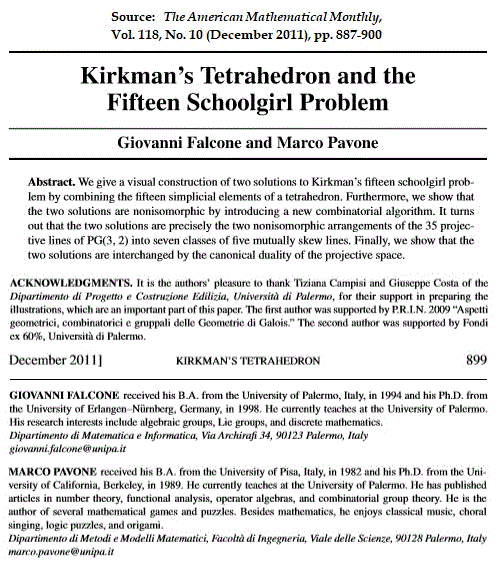
See also other posts tagged Tetrahedron vs. Square, and a related
Log24 search for "Schoolgirl + Space."
Wednesday, July 10, 2019
Artifice* of Eternity …
… and Schoolgirl Space
"This poem contrasts the prosaic and sensual world of the here and now
with the transcendent and timeless world of beauty in art, and the first line,
'That is no country for old men,' refers to an artless world of impermanence
and sensual pleasure."
— "Yeats' 'Sailing to Byzantium' and McCarthy's No Country for Old Men :
Art and Artifice in the New Novel,"
Steven Frye in The Cormac McCarthy Journal ,
Vol. 5, No. 1 (Spring 2005), pp. 14-20.
See also Schoolgirl Space in this journal.
* See, for instance, Lewis Hyde on the word "artifice" and . . .
Tuesday, April 30, 2019
Heraldry for Walpurgisnacht
Friday, February 22, 2019
Desperately Seeking Comedy
"I need a photo opportunity . . ." — Paul Simon
Sunday, August 19, 2018
Apollo and the Furies
Narration by the fictional schoolgirl Pagan Moore in a novel
apparently first published on March 4, 2004 —
|
"Now, can anyone else tell me or shall I ask Miss Moore again to help us out?” “Apollo is a symbol for the male, the rational, the young, and the civilized. The Furies represent the female, the violent, the old, and the primal. Aeschylus captures a mythical moment in history, one in which the world was torn between a savage and archaic past and the bold new order of Greek civilization, the young Olympian gods, and rationality. The difficulty of the struggle between these two worlds is dramatized by the cycle of violence in the House of Atreus and the clash between Apollo and the Furies.” No one giggled after Dank finished.
—Existence (first novel of a trilogy), pp. 80-81. |
Update at 1:37 PM ET the same day —
A check for the source of the above speech yields …
"Apollo is a symbol for the male, the rational, the young, and the civilized.
The Furies represent the female, the violent, the old, and the primal."
This passage is from
https://www.gradesaver.com/the-eumenides/study-guide/themes.
From the citation data there —
"By Borey, Eddie. 'The Eumenides Themes.'
GradeSaver, 24 October 2000 Web."
Saturday, August 18, 2018
Pagan Song Trilogy
Tuesday, January 2, 2018
Debs and Redhead
The above images were suggested in part by the birthdays
on Sept. 21, 2011, of Bill Murray and Stephen King.
More seriously, also in this journal on that date, from a post
titled Symmetric Generation —
Sunday, November 12, 2017
Review
|
Sunday, October 29, 2017
File System… Unlocked
|
See as well Chloë Grace Moretz portraying a schoolgirl problem.
Thursday, November 2, 2017
History of Mathematics for All Souls’ Day
Schoolgirl Problem
"Buy this image" . . . Or not.
Related material from the date of the above photo —
For related drama, see "Child's Play" in this journal.
Sunday, October 29, 2017
File System… Unlocked
Logo from the above webpage —

See also the similar structure of the eightfold cube, and …
Related dialogue from the new film "Unlocked" —
1057
01:31:59,926 –> 01:32:01,301
Nice to have you back, Alice.
1058
01:32:04,009 –> 01:32:05,467
Don't be a stranger.
Thursday, October 12, 2017
Gifted Continues
Related material — See Gifted in this journal.
See as well Tulips.
Yesterday was the International Day of the Girl Child . . .
A related archived Wikipedia article on Kirkman's schoolgirl problem :
See also the previous post— "IPFS Version"— and https://ipfs.io/.
Wednesday, October 11, 2017
Wednesday, July 5, 2017
Imaginarium of a Different Kind
The title refers to that of the previous post, "The Imaginarium."
In memory of a translator who reportedly died on May 22, 2017,
a passage quoted here on that date —
Related material — A paragraph added on March 15, 2017,
to the Wikipedia article on Galois geometry —
|
George Conwell gave an early demonstration of Galois geometry in 1910 when he characterized a solution of Kirkman's schoolgirl problem as a partition of sets of skew lines in PG(3,2), the three-dimensional projective geometry over the Galois field GF(2).[3] Similar to methods of line geometry in space over a field of characteristic 0, Conwell used Plücker coordinates in PG(5,2) and identified the points representing lines in PG(3,2) as those on the Klein quadric. — User Rgdboer |
Saturday, May 20, 2017
van Lint and Wilson Meet the Galois Tesseract*
Click image to enlarge.
The above 35 projective lines, within a 4×4 array —
The above 15 projective planes, within a 4×4 array (in white) —

* See Galois Tesseract in this journal.
Friday, February 17, 2017
Heptads and Heptapods
In the recent science fiction film "Arrival," Amy Adams portrays
a linguist, Louise Banks, who must learn to translate the language of
aliens ("Heptapods") who have just arrived in their spaceships.
The point of this tale seems to have something to do with Banks
learning, along with the aliens' language, their skill of seeing into
the future.
Louise Banks wannabes might enjoy the works of one
Metod Saniga, who thinks that finite geometry might have
something to do with perceptions of time.
See Metod Saniga, “Algebraic Geometry: A Tool for Resolving
the Enigma of Time?”, in R. Buccheri, V. Di Gesù and M. Saniga (eds.),
Studies on the Structure of Time: From Physics to Psycho(patho)logy,
Kluwer Academic / Plenum Publishers, New York, 2000, pp. 137–166.
Available online at www.ta3.sk/~msaniga/pub/ftp/mathpsych.pdf .
Although I share an interest in finite geometry with Saniga —
see, for instance, his remarks on Conwell heptads in the previous post
and my own remarks in yesterday's post "Schoolgirls and Heptads" —
I do not endorse his temporal speculations.
Wednesday, February 15, 2017
Warp and Woof
Space —
Space structure —
From Gotay and Isenberg, “The Symplectization of Science,”
Gazette des Mathématiciens 54, 59-79 (1992):
“… what is the origin of the unusual name ‘symplectic’? ….
Its mathematical usage is due to Hermann Weyl who,
in an effort to avoid a certain semantic confusion, renamed
the then obscure ‘line complex group’ the ‘symplectic group.’
… the adjective ‘symplectic’ means ‘plaited together’ or ‘woven.’
This is wonderfully apt….”

The above symplectic figure appears in remarks on
the diamond-theorem correlation in the webpage
Rosenhain and Göpel Tetrads in PG(3,2).
Space shuttle —
Related ethnic remarks —
… As opposed to Michael Larsen —
Funny, you don't look Danish.
Wednesday, June 1, 2016
Mathematics and Narrative
Principles before Personalities — AA Saying .
Principles —
See Schoolgirl Problem in Wikipedia.
Personalities —
See Alexandra Alter in the May 26 online New York Times :
"With the proliferation of 'girl' titles,
there are signs that the trend may have peaked;
it already seems ripe for parody."
Update of 12:40 PM ET on Wednesday, June 1, 2016 —
A note for the Church of Synchronology …
See a post from this journal on the date of the Alter piece, May 26:
(Click image for the rest of the post .)
Monday, May 30, 2016
Perfect Universe
(A sequel to the previous post, Perfect Number)
Since antiquity, six has been known as
"the smallest perfect number." The word "perfect"
here means that a number is the sum of its
proper divisors — in the case of six: 1, 2, and 3.
The properties of a six-element set (a "6-set")
divided into three 2-sets and divided into two 3-sets
are those of what Burkard Polster, using the same
adjective in a different sense, has called
"the smallest perfect universe" — PG(3,2), the projective
3-dimensional space over the 2-element Galois field.
A Google search for the phrase "smallest perfect universe"
suggests a turnaround in meaning , if not in finance,
that might please Yahoo CEO Marissa Mayer on her birthday —


The semantic turnaround here in the meaning of "perfect"
is accompanied by a model turnaround in the picture of PG(3,2) as
Polster's tetrahedral model is replaced by Cullinane's square model.
Further background from the previous post —
See also Kirkman's Schoolgirl Problem.
Monday, December 21, 2015
The Eppstein Edit
A Wikipedia edit today by David Eppstein, a professor
at the University of California, Irvine:
See the Fano-plane page before and after the Eppstein edit.
Eppstein deleted my Dec. 6 Fano 3-space image as well as
today's Fano-plane image. He apparently failed to read the
explanatory notes for both the 3-space model and the
2-space model. The research he refers to was original
(in 1979) but has been published for some time now in the
online Encyclopedia of Mathematics, as he could have
discovered by following a link in the notes for the 3-space
model.
For a related recent display of ignorance, see Hint of Reality.
Happy darkest night.
Sunday, June 14, 2015
New Image of PG(3,2)
… was added to the Wikipedia article Finite geometry.
(Shown above is a slightly newer image, changed to reflect
the Wikipedia article's remarks on the schoolgirl problem.)
Tuesday, July 9, 2013
Vril Chick
Profile picture of "Jo Lyxe" (Josefine Lyche) at Vimeo—

Compare to an image of Vril muse Maria Orsitsch.
From the catalog of a current art exhibition
(25 May – 31 August, 2013) in Norway,
I DE LANGE NÆTTER —
|
Josefine Lyche
Keywords (to help place my artwork in the (See also the original catalog page.) |
Clearly most of this (the non-highlighted parts) was taken
from my webpage Diamond Theory. I suppose I should be
flattered, but I am not thrilled to be associated with the
(apparently fictional) Vril Society.
For some background, see (for instance)
Conspiracy Theories and Secret Societies for Dummies .
Wednesday, March 11, 2009
Wednesday March 11, 2009
in Translation
(continued from
May 15, 1998)
The New York Times March 10–
"Paris | A Show About Nothing"–

The Times describes one of the empty rooms on exhibit as…
"… Yves Klein’s 'La spécialisation de la sensibilité à l’état matière première en sensibilité picturale stabilisée, Le Vide' ('The Specialization of Sensibility in the Raw Material State Into Stabilized Pictorial Sensibility, the Void')"
This is a mistranslation. See "An Aesthetics of Matter" (pdf), by Kiyohiko Kitamura and Tomoyuki Kitamura, pp. 85-101 in International Yearbook of Aesthetics, Volume 6, 2002—
"The exhibition «La spécialisation de la sensibilité à l’état matière-première en sensibilité picturale stabilisée», better known as «Le Vide» (The Void) was held at the Gallery Iris Clert in Paris from April 28th till May 5th, 1955." –p. 94
"… «Sensibility in the state of prime matter»… filled the emptiness." –p. 95
Kitamura and Kitamura translate matière première correctly as "prime matter" (the prima materia of the scholastic philosophers) rather than "raw material." (The phrase in French can mean either.)
The Diamond Archetype and
The Illuminati Diamond.
The link above to
prima materia
is to an 1876 review
by Cardinal Manning of
a work on philosophy
by T. P. Kirkman, whose
"schoolgirl problem" is
closely related to the
finite space of the
diamond theorem.
Tuesday, October 3, 2006
Tuesday October 3, 2006
Serious
"I don't think the 'diamond theorem' is anything serious, so I started with blitzing that."
— Charles Matthews at Wikipedia, Oct. 2, 2006
"The 'seriousness' of a mathematical theorem lies, not in its practical consequences, which are usually negligible, but in the significance of the mathematical ideas which it connects. We may say, roughly, that a mathematical idea is 'significant' if it can be connected, in a natural and illuminating way, with a large complex of other mathematical ideas."
— G. H. Hardy, A Mathematician's Apology
Matthews yesterday deleted references to the diamond theorem and related material in the following Wikipedia articles:
Affine group
Reflection group
Symmetry in mathematics
Incidence structure
Invariant (mathematics)
Symmetry
Finite geometry
Group action
History of geometry
This would appear to be a fairly large complex of mathematical ideas.
See also the following "large complex" cited, following the above words of Hardy, in Diamond Theory:
Affine geometry, affine planes, affine spaces, automorphisms, binary codes, block designs, classical groups, codes, coding theory, collineations, combinatorial, combinatorics, conjugacy classes, the Conwell correspondence, correlations, design theory, duads, duality, error correcting codes, exceptional groups, finite fields, finite geometry, finite groups, finite rings, Galois fields, generalized quadrangles, generators, geometry, GF(2), GF(4), the (24,12) Golay code, group actions, group theory, Hadamard matrices, hypercube, hyperplanes, hyperspace, incidence structures, invariance, Karnaugh maps, Kirkman's schoolgirl problem, Latin squares, Leech lattice, linear groups, linear spaces, linear transformations, Mathieu groups, matrix theory, Meno, Miracle Octad Generator, MOG, multiply transitive groups, octads, the octahedral group, orthogonal arrays, outer automorphisms, parallelisms, partial geometries, permutation groups, PG(3,2), polarities, Polya-Burnside theorem, projective geometry, projective planes, projective spaces, projectivities, Reed-Muller codes, the relativity problem, Singer cycle, skew lines, sporadic simple groups, Steiner systems, symmetric, symmetry, symplectic, synthemes, synthematic, tesseract, transvections, Walsh functions, Witt designs.
Friday, September 10, 2004
Friday September 10, 2004
For Samira Bellil,

who died in Paris on
Friday, Sept. 3, 2004…
From the link at
Symmetry and Change
in the Dreamtime,
Part 8, Friday,
Sept. 3, 2004,
Noon…
Three songs from Sept. 10
in various preceding years–
“Good morning little schoolgirl
Good morning little schoolgirl
Can I come home with
Can I come home with you“
— Rod Stewart, Sept. 10, 1964
“Tell your mamma, girl, I can’t stay long
We got things we gotta catch up on
Mmmm, you know
You know what I’m sayin’ “
— Neil Diamond, Sept. 10, 1966
“A time of war, a time of peace
A time of love, a time of hate
A time you may embrace
A time to refrain from embracing“
— The Byrds, Sept. 10, 1965
Further verses from the Byrds
seem appropriate on this, the day
of Samira Bellil’s funeral:
To everything, turn, turn, turn,
there is a season, turn, turn, turn…
“It’s not even called rape. They call it
a tournante, or pass-round.
The banality is deliberate:
a joint, a girl – same difference.”
… and a time to every purpose
under heaven.
“… The kind of school where teacher
Fabrice Genestal kept hearing
the word “tournante” and didn’t click
what it meant, till he and Sillam
sat the kids down in after-school
workshops, and got talking.”
Tuesday, September 10, 2002
Tuesday September 10, 2002
The Sound of Hanging Rock
On this date, director Robert Wise was born in Winchester, Indiana. Credits include
“Born to Kill,”
“I Want to Live,” and
“The Sound of Music.”
“Director Robert Wise suggests that we all share a collective dark side.” — Robert Weston
According to various Web sources,
- On this date in 1964, Rod Stewart records his first song, “Good Morning Little Schoolgirl.”
Good morning little schoolgirl
Good morning little schoolgirl
Can I come home with
Can I come home with you
Tell your mama and your papa
I once was a schoolboy too - On this date in 1965, The Byrds begin recording “Turn! Turn! Turn!”
A time of war, a time of peace
A time of love, a time of hate
A time you may embrace
A time to refrain from embracing -
On this date in 1966, Neal Diamond sings his first chart song, “Cherry Cherry.”
Tell your mamma, girl, I can’t stay long
We got things we gotta catch up on
Mmmm, you know
You know what I’m sayin’
With the exception of The Byrds, the above music seems to reflect the spirit of Pan, a god discussed in my September 9 notes below.
For a perhaps more accurate rendition of the spirit of Pan, see the classic Australian film
“From the opening shot of Hanging Rock, lovingly framed by cinematographer Russell Boyd, accompanied by the strains of the pan flute played by Gheorghe Zamfir, the film sets its elegant, restrained tone….”




















-embedding-in-PG(3,2)-Planat-Saniga.jpg)



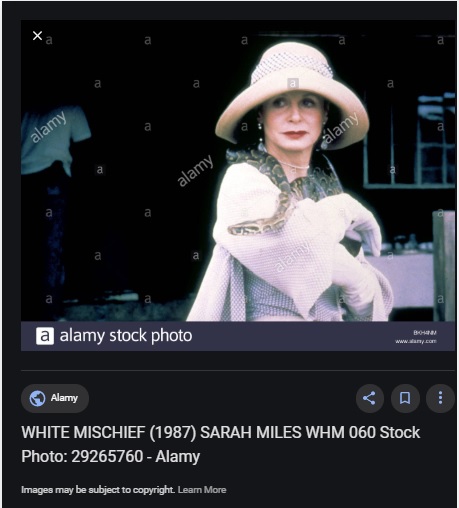





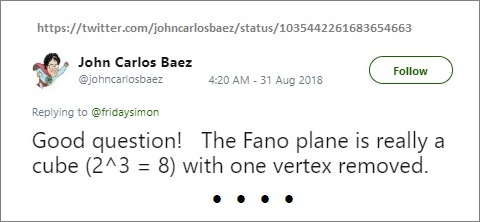




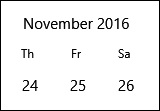
















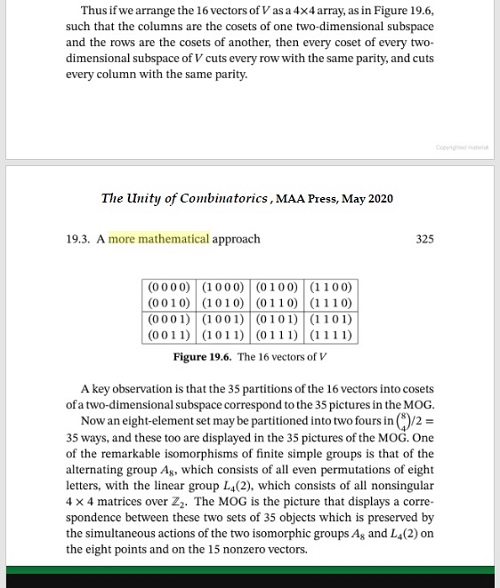









 .
.